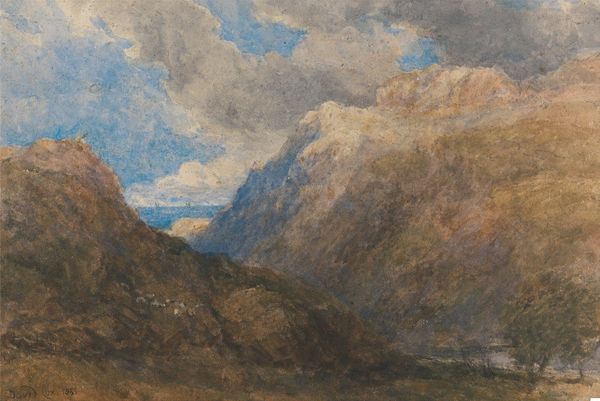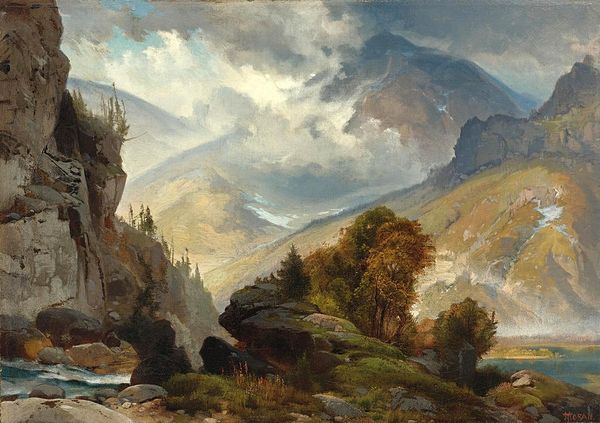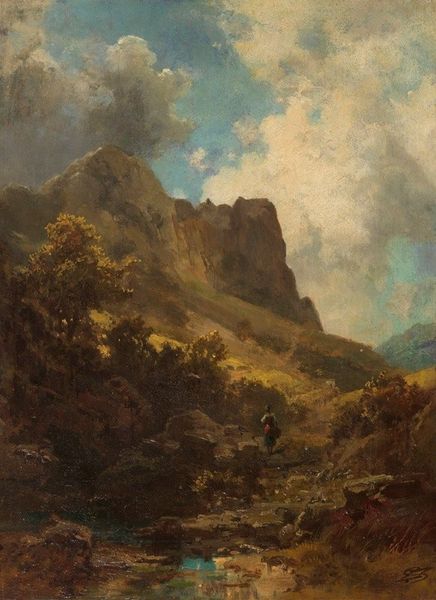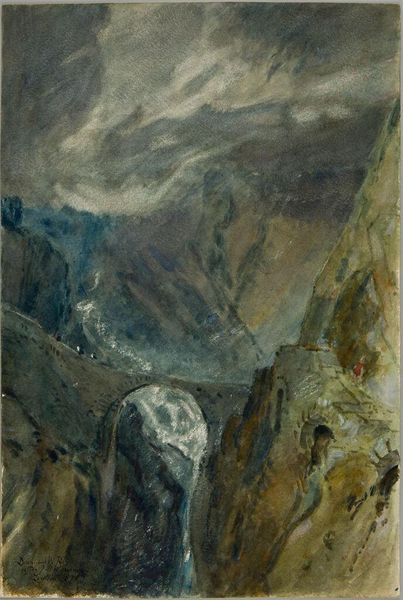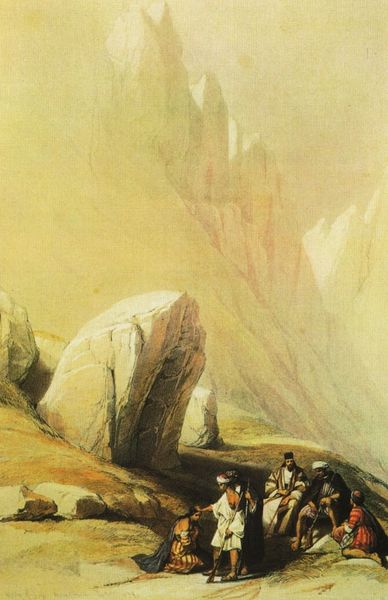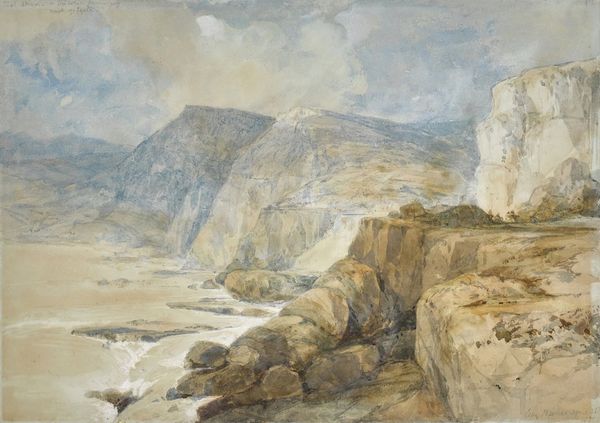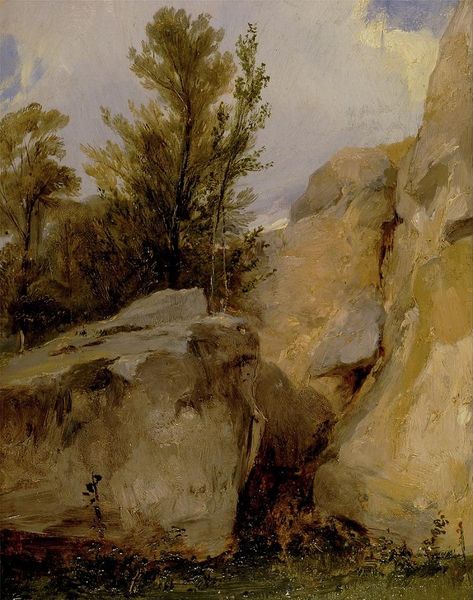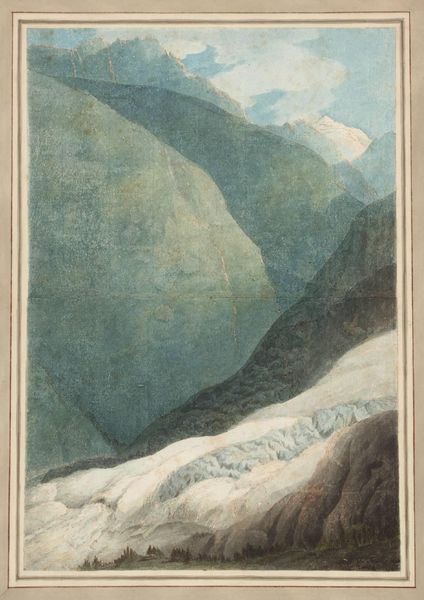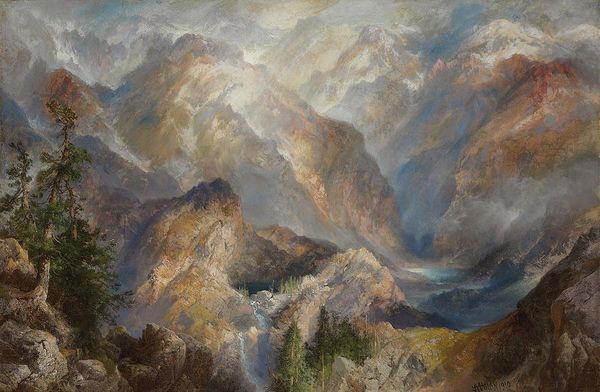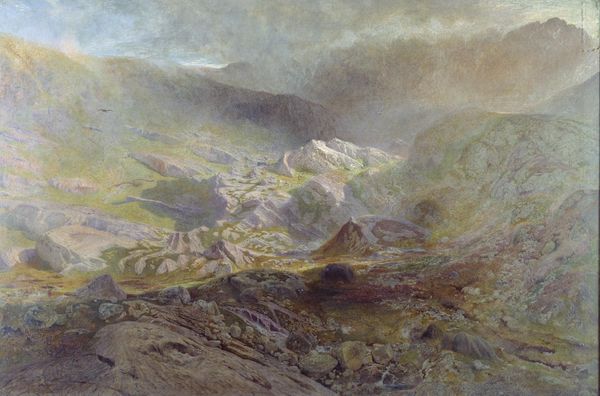
Copyright: Public domain
Curator: I’m struck by the sheer emptiness. It’s as if the landscape is swallowing you whole. Editor: Indeed. This is "Darial Gorge" by Ivan Konstantinovich Aivazovsky, created in 1891 using oil paint. It represents the Darial Gorge in the Caucasus Mountains, a site imbued with both strategic importance and cultural significance. Curator: You can almost feel the grit of the stone; those browns and beiges aren't romanticized at all. There’s a definite sense of geological heft—it makes me think about the labor required to traverse such a landscape. And what about the pigment choices here? Editor: Absolutely. The gorge served as a crucial passage throughout history, linking Russia with the southern Caucasus. Aivazovsky, deeply connected to Russian imperial expansion, frequently depicted sites of strategic value, blending topographic realism with romantic idealism. The location of the site itself holds great political symbolism regarding expansion and imperialism in Russia at the time. Curator: So the material realities of empire—the need for roads, forts, passage for armies—becomes, in his hands, this… overwhelming vista. Do you think those tiny figures are a romantic flourish or an important addition? Editor: They're essential to understanding the painting’s power dynamics. Those figures emphasize not only the scale of nature, a key aspect of Romanticism, but also humanity's tenuous grip on the landscape. It underscores the monumental labor demanded by empire-building, the sheer force required to dominate such a terrain. Curator: Thinking about Aivazovsky's body of work, I can't help but question whether he viewed the gorge and its inhabitants as materials, integral to the construction of a grander Russian narrative. What sort of labor do you imagine he underwent himself when creating this artwork? Editor: It’s hard to ignore Aivazovsky's close ties to the Imperial court, he enjoyed immense state patronage and he seems very committed to expressing a distinctly Russian view of the landscape in many of his other works, something that has had an influence on how history regards his pieces. Perhaps this explains the subdued tones we observe in the canvas. Curator: It seems Aivazovsky was more than just an artist capturing pretty scenes. This piece reveals that a painted landscape can be a potent carrier of power, even one shrouded in artistic conventions. Editor: Agreed. “Darial Gorge” reminds us how landscape art often operates as an assertion of control and claim, cloaked in beauty and romantic ideals. It offers much to contemplate.
Comments
No comments
Be the first to comment and join the conversation on the ultimate creative platform.

